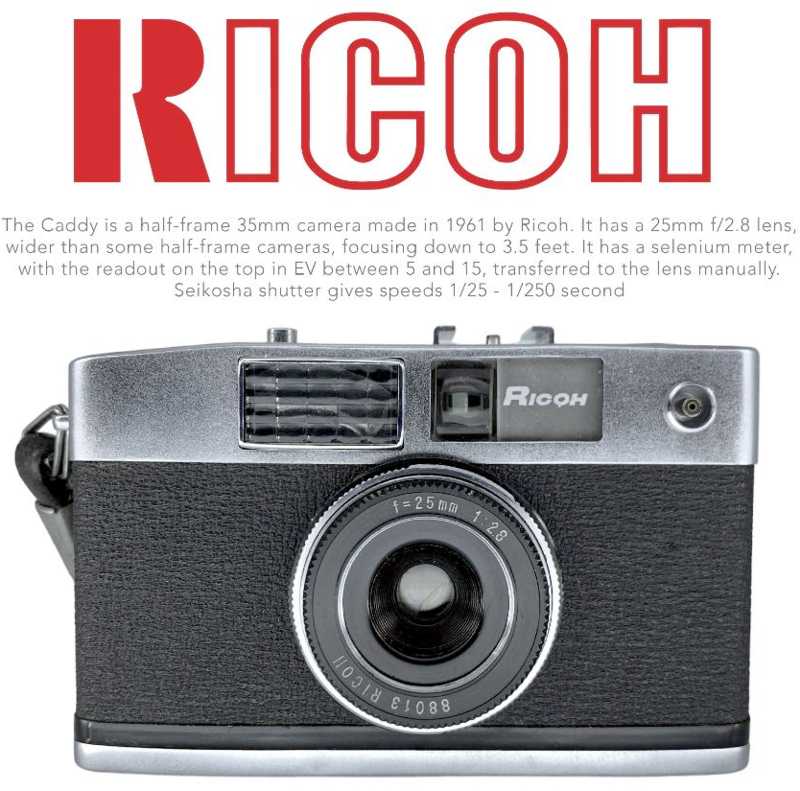
Ricoh Caddy
In 1960, Ricoh jumped onto the half-frame bandwagon with the first of several
models in the popular Auto-Half series. Still testing the waters, in
1961 they came out with a half-frame aimed at a different photographic
niche. The Ricoh Caddy is a small, simple, but fully-functional
camera, but quite a bit defferent from the much more familiar Ricoh Auto
Half style. First, it dropped the spring-drive of the Auto Half.
This makes for a much lighter camera, of course. Second, it has
a 25mm (f2.8) lens -- like the Auto Half -- but it was a focusing lens. That's
not just a significant change from the fixed-focus lens of the Auto Half,
but it makes for even sharoper pictures! The slightly-wide 25mm lens
is equivalent to a 35mm lens on a full-frame 35mm camera. It is recessed
into the camera body and only the lens controls actually protrude.
Focusing is from infinity to 3.3 feet. Another big difference
was that the Caddy has full manual control of the f-stops and shutter speeds
-- the Auto-Half cameras were designed to be fully automatic. The apertures
of the Caddy run from f2.8 to f 16 with speeds of B, 1/4 - 1/250. The
camera has a built in selenium meter and an EV-based manual exposure control
system. First, dial in the film speed (ISO 12 - 400). Next, point
the camera at the scene and look at the meter readout on the top of the camera.
The exposure needle will point to an EV number. Transfer the EV number
(5 - 16) to the scale on the top of the lens and you're ready to shoot. If
you prefer, you can select the f-stop and shutter speed manually with scales
on the bottom of the lens. The rings on the camera are very thin and
when you move one, you are likely to move the other. But this works
very well with the EV system, since the aperture ring and the shutter speed
ring run in opposite directions. One increases clockwise, while the
other decreases clockwise -- so when you turn both rings at the same time,
you always end up with the same total exposure -- or EV number. The
camera has a cold flash shoe, PC contact, tripod socket, and cable release
socket -- all in a small, smooth body, unlike the boxy body of the Auto Half
series. The lens accepts 25mm filters. The film advance is with
a dial/wheel under the right thumb -- very convenient. It's a nice,
versatile camera in a very small package, but harder to find than most Ricoh
half-frame cameras.
COPYRIGHT @ 1995-2018 by Joe McGloin. All
Rights Reserved.

